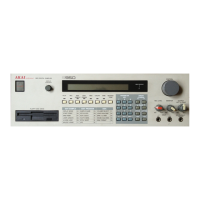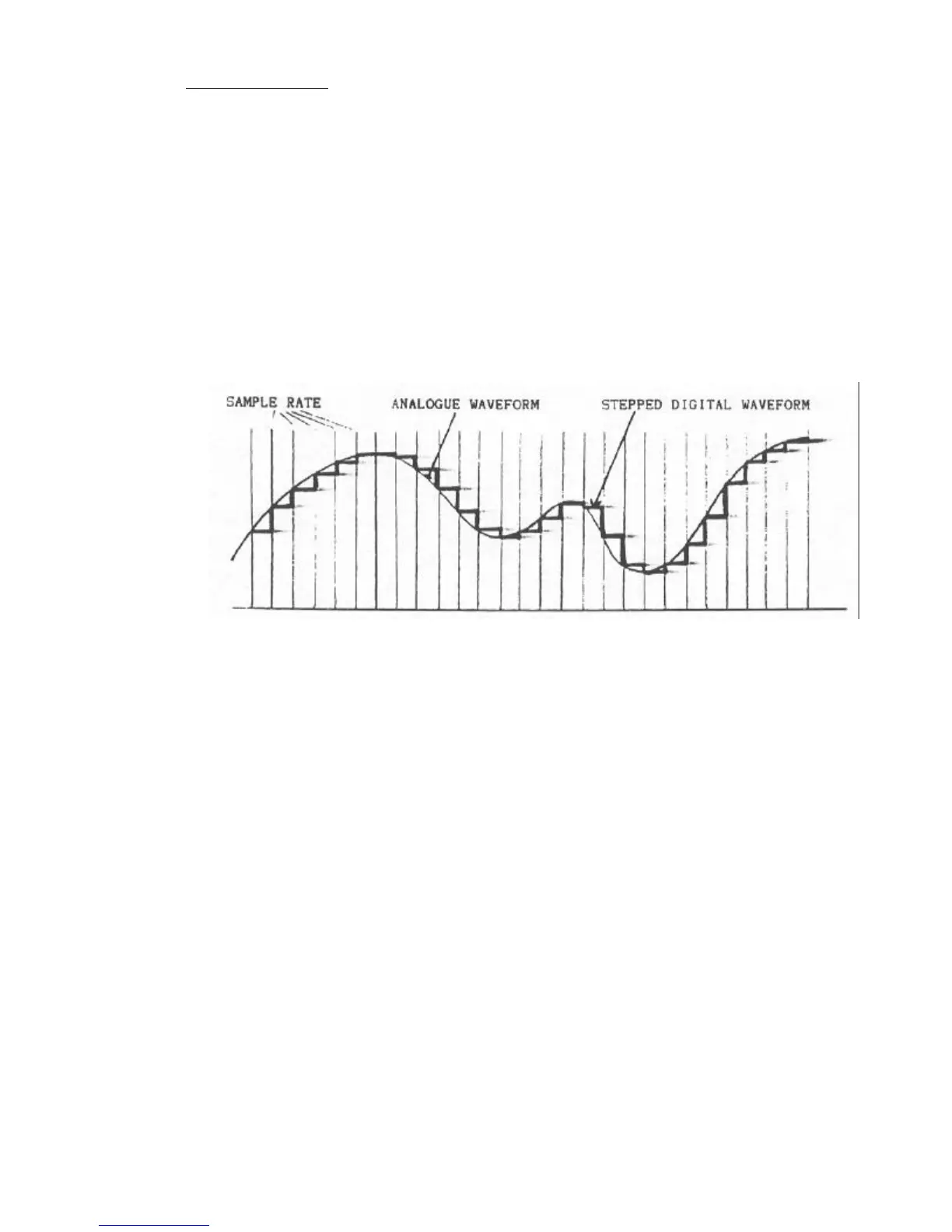Sampling is a method of digital recording but, unlike digital tape recorders,
a sampler can only record a short amount of sound. Basically, a sampler is a
bit like a movie camera. As you know, a movie camera does not take one
continuous photograph of a moving object but takes a whole pile of snapshots
which, when played back at the right speed, gives the illusion of motion.
Similarly with sampling. When you sample a sound, it takes a series of
digital audio 'snapshots' which are then stored in computer memory. These
snapshots have to be taken because computers (which is what a sampler is) can
only deal in absolute numbers whereas sound is continuously variable. When
you sample something into your 5950, you actually digitise the sound using a
device known as an ANALOGUE TO DIGITAL CONVERTER or ADC which converts the
contiuously variable waveform into a digital stepped waveform with each of
the steps being one snapshot (see Fig. 1>.
FIG. 1. Digitising an analogue waveform
Probably the most important factor with sampling is the sampling rate as this
decides the BANDWIDTH or the audio quality. The sampling rate has to be very
fast in order to faithfully reproduce the sampled sound. Going back to the
movie camera analogy, you will remember that in the early days of silent
films, the movements always seemed perky. This is because the speed of the
camera was not fast enough to capture every single movement and when it
played the film back, the result was that ,perky, stuttered motion. Nowadays,
camera speed is a lot faster so movement seems smooth and natural. Similarly
with samplers - if you don't have a fast enough sampling rate, the resultant
sound will be distorted and lacking in higher frequencies and so will sound
muffled. There will also be digital noise present in the signal (known as
ALIASING) and the results will not bear much relationship to the original
sound you sampled. If you compare Fig. 2 with Fig. 1 you will see why ° Fig.
2 with the low sampling rate doesn't look anything like the incoming signal
whereas Fig. 1 with the faster sampling rate is a lot more accurate. In order
for the sound in Fig. 2 to sound half decent, heavy filtering has to be used
which will get rid of the distortion and digital noise but this will also
produce a more muffled tone as it will remove the higher frequency component
of the sound even further.
76

